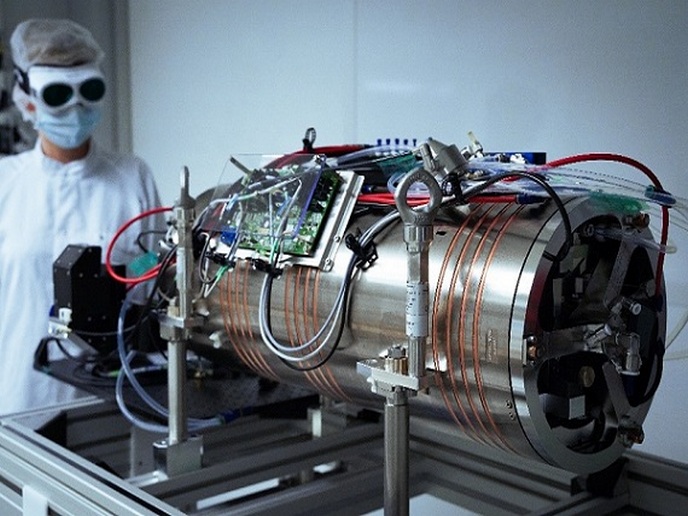Cognitive robots to ramp up SME production processes
To enable industry robots to move away from repetitive tasks, the SMEROBOTICS (The European Robotics Initiative for Strengthening the Competitiveness of SMEs in Manufacturing by integrating aspects of cognitive systems) project sought to enhance them with cognitive abilities. ‘The kinematic of a standard six or seven axis robot can reach almost arbitrary positions and orientation within its range and can do so with high precision and speed. But in order to be able to complete any useful task, the robot must be provided with sensors, grippers and other tools. Furthermore, it needs to be integrated into the production site and interface with other systems in order to fulfil a task. Achieving this requires complex software, which is a costly process and sacrifices the flexibility of the hardware,’ says Martin Hägele, Head of Department Robot and Assistive Systems at Fraunhofer and coordinator of SMEROBOTICS. Deploying a robot system is therefore cost- and time-consuming, and is only economically feasible if the robot is constantly running and performing the same task for as long as possible so as to maximise return on investment. This doesn’t quite fit with the production needs of an SME. With his team, Hägele believes that making robots ‘cognitive’ — that is, providing them with advanced planning, reasoning and sensor data processing capabilities — is the solution. Smart robots working hand in hand with humans Unlike its ancestors, a cognitive robot can be told what to do without necessarily being told how to do it. ‘The worker can mark workpiece surfaces that should be joined for assembly in a graphical user interface or define graphically where large wooden panels should be placed and where they need to be nailed. The system automatically computes the necessary robot trajectories, including needed tool changes, and finally executes the task,’ Hägele explains. The robot’s cognitive capabilities allow it to monitor a process for deviations and error conditions. It learns from observation, reasons about error causes, automatically adapts to reflect the normal process or requires user interaction for corrective measures depending on the importance of the variation. The system learns from user responses to improve the accuracy of its messages and suggested solutions. Finally, it facilitates cross-vendor system integration thanks to a ‘glue code’ that translates between various vendor standards — a task that until now could only be performed by programming experts. Enhanced human-machine cooperation was also a key concern for the consortium. In an SME, workers implicitly hold most of the knowledge, and past attempts to make this knowledge explicit by programming it into a standard robot system were of limited success. ‘This is comparable to cooking,’ says Hägele ‘While it is easy to note down all the ingredients for a meal, record instructions as to what to add first and what last, provide quantities and steps and time required, it is practically impossible to describe the finer details of how a piece has to ‘feel’ when well done. The only way to really learn is to learn from a master’. With SMEROBOTICS, the skilled worker is the master and the robot system is the apprentice. ‘A typical workflow would go as follows: The system scans new workpieces, automatically identifies the required weld seams based on provided CAD models or geometric heuristics and gives the welder appropriate parameter suggestions. Then it generates the welding program automatically,’ Hägele explains. ‘The welder can either make changes to the program through an intuitive user interface or have it executed immediately. Any desired changes are learned by the system and taken into account in subsequent tasks. Using state of the art machine learning algorithms, the system can record and analyse many different welding tasks and infer rules on how to best perform a given new task. This collaboration combines the knowledge of the welding expert with the constant process quality of the welding robot. We call it “symbiotic human-robot collaboration”: The worker benefits from the robot’s strength, precision and duration, and the robot benefits from the worker’s experience and knowledge,’ From lab to market SMEROBOTICS developed several technology components for system integrators as well as complete work cells for end-user sites. The solutions cover assembly, welding and woodworking, as well as other typical use cases have been developed within the project, which recently showcased eight running work cells and three additional technologies at the AUTOMATICA trade fair in June. ‘CoWeldRob’, a welding cell that allows preassembled components to be seam-welded in just a few simple steps and already reduced the production time of a small family-owned welding company’s production by a factor 20 to 30, was one of them. Other contributions include a two-arm robot that acts similarly to a human worker and can be used to weld large components for the likes of the construction sector; and a cell with tolerances in the micrometre range for which tests already revealed a 30 % lower error rate in assembly of the spool than with current manual process. The consortium has been working closely with interested SMEs since the beginning of the project and, since it came to an end in June 2016, the consortium is looking for end users in order to implement the cells in their specific use cases. The software modules for intuitive programming and program generation are available as standalone modules and can already be used by automation and industrial IT suppliers in their own solutions. Components or technologies could be partially implemented in SME production or being completely integrated as a work cell. ‘The welding cell and the hydraulic valve assembly are expected to be turned into commercial products within twelve months. Similar, albeit less concrete plans exist for the dual-arm welding system, and for some of the software services developed in the project,’ Hägele concludes.
Keywords
Robotics, SMEROBOTICS, SMEs, manufacturing, production process







